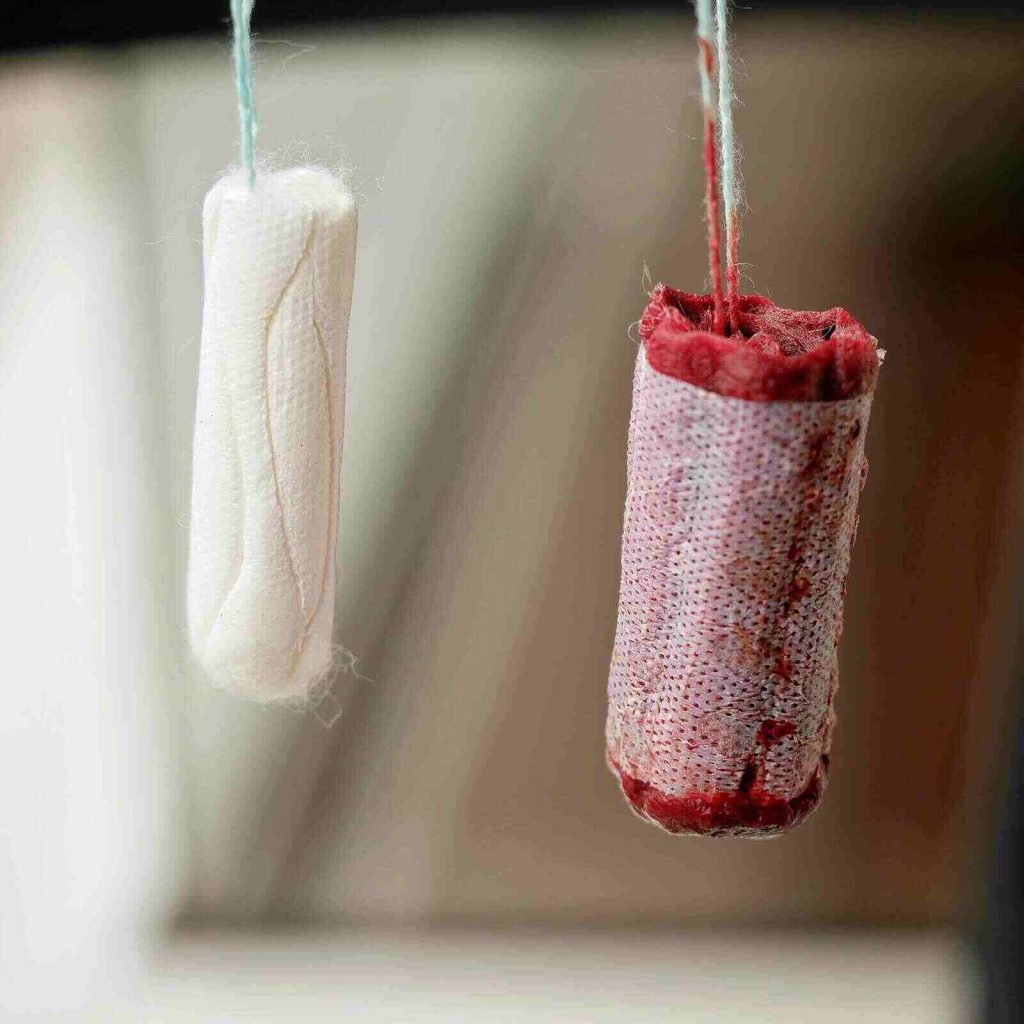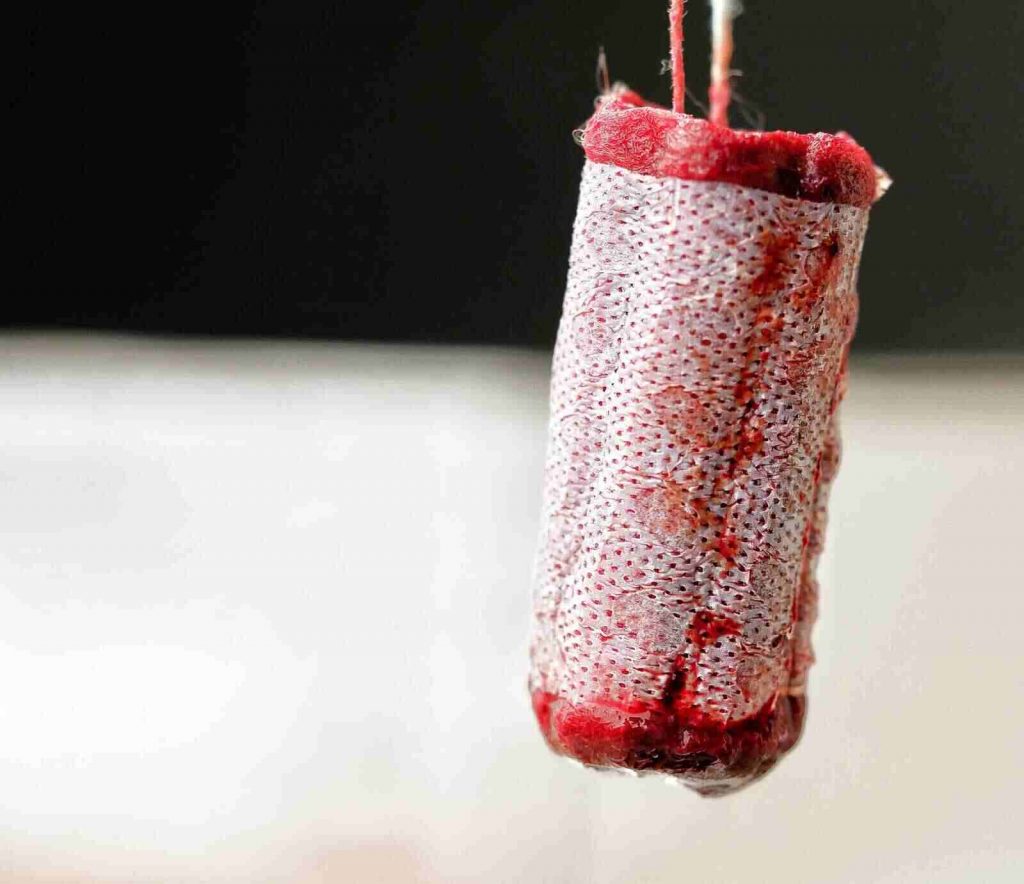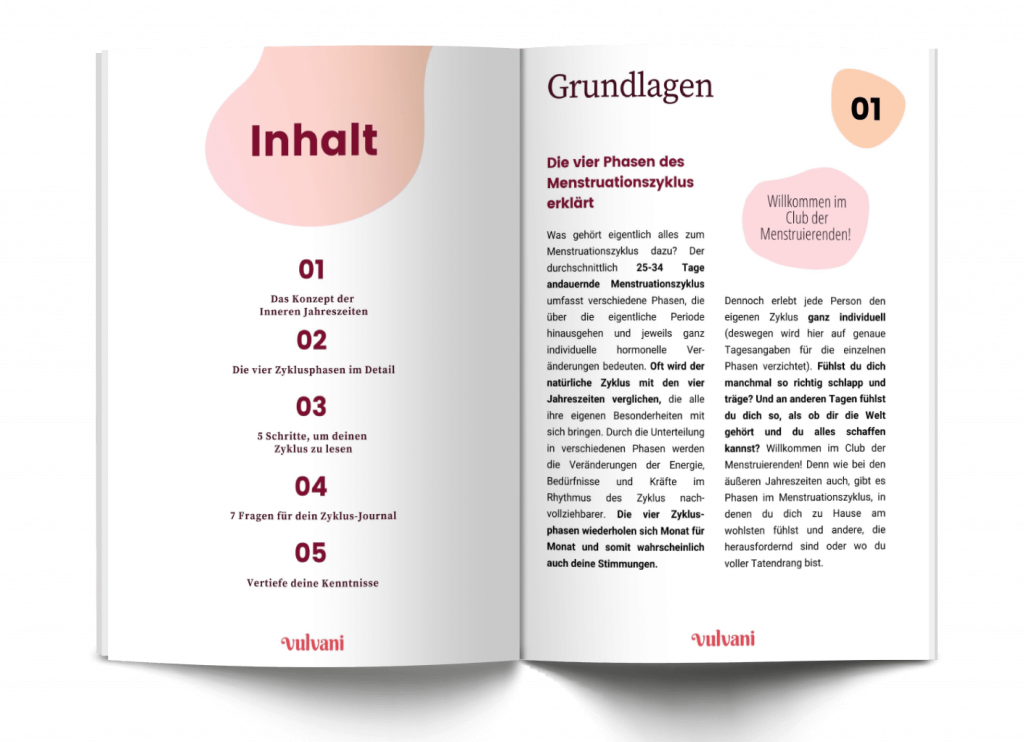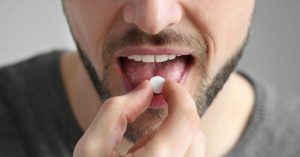
Discovering your menstruation as a spiritual practice
Yasmine understands her menstruation as a spiritual practice and shares in this interview how she is connecting more with her own body through cycle awareness.

There are many sensational articles emphasising the dangers of using tampons and just as many scathing rebuttals. It can be tricky and scary to navigate! It’s true that there aren’t many studies on the long-term effects that using tampons may have on your health. While some companies include ingredient lists on tampons’ packaging, this is not a requirement in Europe or the USA. Consumers should know what they put in their bodies. So, what is actually in tampons? And is it dangerous?
To begin: How are tampons made? This video from Tampax illustrates it better than we could:
Tampons nowadays are made of either cotton or rayon. They used to be made from synthetic fibres, like polyester, polyacrylate rayon, carboxymethylcellulose, and viscose rayon. However, these synthetic fibres act as a ‘petri dish’ for the bacteria Staphylococcus aureus. This already lives in some menstruators’ vaginas and produces toxins that can cause toxic shock syndrome. Since the scare over TSS a few decades ago, the only synthetic fibre in use today is viscose rayon. This is made from purified wood pulp.
These days research suggests that cotton and rayon tampons are equally safe. But Philip Tierno, a professor at New York University who has spent decades researching TSS, emphasises that he has only found it in connection with rayon tampons, not cotton ones. The use of synthetic fibres, therefore, remains a concern, even if they are more absorbent than cotton.
Other than the absorbent material, applicator tampons use cardboard or plastic applicators. The effect of plastic on the vagina is a concern for some, but Tampax emphasise that the plastic is BPA-free, making it safe for use. Scented tampons can also include whatever ingredients are in the fragrance. This is a concern: these fragrances have been called ‘chemical soup’. But from 2021 Tampax have said they no longer manufacture these in the US. A more detailed breakdown of the ingredients in Tampax products is on their website. Other companies, unfortunately, are not so transparent.

This run-down of ingredients is not, however, completely representative of what is in tampons. Many concerns over tampons are about chlorine and dioxins. Chlorine was once used to bleach and purify the fibres in tampons. This has not been the case for over a decade, thankfully. Dioxins, meanwhile, are a more current concern. These are carcinogens often produced by the purification and production process. Tampax again emphasises that their process does not produce them. The FDA in America has ruled that while there are dioxins in tampons, they are in such trace amounts as to be insignificant.
There are also concerns about the remains of herbicides and pesticides on tampons made from genetically modified cotton. GMO cotton is more likely to have these traces, but they are not yet flagged as a significant threat.
With these facts clear, what are the implications of these ingredients in tampons? While they may not be as damning as the internet would want you to believe, there remains a concern.
One key reason for this is that the vagina is very absorbent. It has many blood vessels and absorbs chemicals directly into the blood without metabolising them. There has even been researched into administering drugs via the vagina. It absorbs oestrogen up to ten times faster than it would be absorbed orally.
This means that trace chemicals in tampons can be absorbed easily into the body. Tierno, therefore, disagrees with the FDA’s ruling on dioxins. With the thousands of tampons used over a menstruator’s life, the build-up of dioxins within their body could have detrimental effects. Dioxins are present in both cotton and rayon tampons. High exposure to them can cause cancer or negatively affect your immune system.
Furthermore, other trace chemicals can be in tampons. Women’s Voices for the Earth is an organisation that supports community health and the environment. They tested tampons from major brands for 100 air pollutants of concern and found up to four present in their test subjects. More details can be found in their summary of their findings. The most common pollutant found – carbon disulfide – comes from the production of rayon. However, the organisation emphasises that these are only trace amounts. They are not harmful on their own.
Overall, there are plenty of trace ingredients that might be found in tampons. And they might be a concern. Ideally, more research into the short- and long-term effects of this is needed. The main issue is what we don’t know, not what we do. But this does not mean you should panic and never use tampons again.
If you do use tampons, it is best to be aware of what you are putting in your body. Check what is in the tampons you are buying. Follow the advice for them: don’t keep them in for more than eight hours, don’t use them overnight, and use the lowest level of absorbency for you. Make your own choice, and you should be fine.

Note: This article has gone into the discourse about whether or not tampons are dangerous. For more information about other possible drawbacks, see Vulvani’s article on their environmental impact.
What is your opinion on tampons? And what are the alternatives? Leave us a comment below! Want to read more about other menstrual products? Click here!



Yasmine understands her menstruation as a spiritual practice and shares in this interview how she is connecting more with her own body through cycle awareness.

What options are there for male birth control? Ailsa delivers an overview of what is available now, and what may come in the future.

Sustainable underwear? The founders of TUKEA talk about fair labour conditions, body diversity and body literacy.
…and empower countless women to make empowered choices about their bodies!

